Falkland Islands (Islas Malvinas)
Cruise Port schedule, live map, terminals, news
Region
South America
Local Time
2025-04-07 07:31
 50°F
50°F 10°C

 Fresh breeze
Fresh breeze9.1 m/s
 56 °F / 14 °C
56 °F / 14 °C 49 °F / 10 °C
Port Falkland Islands cruise ship schedule shows timetable calendars of all arrival and departure dates by month. The port's schedule lists all ships (in links) with cruises going to or leaving from Falkland Islands, Islas Malvinas. To see the full itineraries (ports of call dates and arrival / departure times) and their lowest rates – just follow the corresponding ship-link.
| Day | Ship | Arrival | Departure |
|---|---|---|---|
| 18 October, 2025 Saturday | |||
| 26 October, 2025 Sunday | |||
| 28 October, 2025 Tuesday | |||
| 28 October, 2025 Tuesday |
Falkland Islands (aka Islas Malvinas) are located in the South Atlantic Ocean, approx 300 mi (483 km) east of South America's Patagonian coast. The archipelago has a total land area approx 4700 mi2 (12000 km2) and population around 3,000. The main (largest) are named East Falkland and West Falkland, in addition to 776 smaller isles including Carcass, New island, Saunders, West Point, Barren, Bleaker, Sea Lion. Part of the archipelago are also Jason Islands (to the northwest).
Being a British Overseas Territory, the Falklands are sovereignty (self-governance) and the UK is responsible for the islands' defence and foreign affairs. The official language is English. Under the Falkland Islands Act of 1983, all Falklanders (aka Kelpers) are British citizens. The capital city, primary cargo port and main cruise port is Stanley (East Falkland Island).
At various times, the Falklands have been inhabited by French, British, Spanish and Argentineans. In 1833 Great Britain reasserted its rule over this territory. However, Argentina claims it since 1982, when Argentine military forces briefly occupied the isles, starting the 2-month long Falklands War. In 2009, the UK's prime minister met with the Argentine president and said that there will be no further talks over the Falklands' sovereignty. In 2013, Falkland Islands had a referendum, when 99,8% of the voters favoured the UK rule.
The Falklands' economy is based mainly on commercial fishing, tourism (including by cruise ship passengers), sheep farming (high-quality wool export). The Falklands are visited by around 56,000 tourists annually. Most of them arrive on cruise liners.
In April 1982 started an armed conflict with Argentina invading the islands and temporarily occupying them until a UK military force retook them in June 1982. After the war, the UK built the Mount Pleasant Airport Complex and increased its local garrison. As result of the war, on the Falklands there are still around 20,000 land mines. Due to the great number of casualties, the attempts to clear them ceased in 1983.
Since July 1, 2018, the Falklands Environment Committee increased the cruise ship passenger landing fee from GBP 10 pp to GBP 25 pp. Part of this fee goes to the "Falkland Islands Museum" in Stanley, where tourists pay GBP 5 pp entrance fee.
The following map of Falkland Islands shows the names and location of all ports, towns and bays.
During summer, the Falklands receive many cruise vessels - mainly smaller-sized ships and megayachts. Their passengers are transported (ferried) ashore via the ship's tender boats or Zodiacs (large-capacity inflatable boats).
Jason Islands
Jason Islands (aka Islas Sebaldes) form an archipelago within the Falklands and are located far northwest of West Falkland Island. The islands Steeple Jason, Grand Jason and Clarke are designated as private nature reserves (owned by the NYC's Wildlife Conservation Society). The rest of the isles in the group are owned by the UK and part of the Falkland's National Nature Reserves. The largest Jason Islands are Steeple Jason, Grand Jason, Elephant Jason, Flat Jason and South Jason.
Steeple Jason Island has a narrow land area separating it into two sections. The terrain features steep slopes. The northern part has a wide plateau which is an area for seabirds breeding.
Grand Jason Island is the group's largest one. Its terrain features steep cliffs, high plains with gullies and badly eroded areas. Flat Jason Island's terrain is low-lying. South Jason Island's ridge has highest elevation point 300 m (980 ft).
Elephant Jason Island's terrain features a long ridge (max height of 208 m / 682 ft), sheer cliffs (on its west coast), a low-lying plain (on its north and east coasts). South Fur Island is approx 3 mi (5 km) south of South Jason and is notable for the dolerite boulders. North Fur is located east of Flat Jason and features steep cliffs making the access (landing) difficult.
Clarke's Islet is located approx 0,3 mi (0,5 km) northeast of Grand Jason. The Fridays are two islets (both low-lying) located approx 3 mi (5 km) northwest of Flat Jason. None of the Jasons has ever been inhabited. Before the 1980s, some of the isles were used for grazing sheep. In 1970, Jason Islands were bought by Len Hill for GBP 5,500. Before the purchase, Steeple and Grand Jason had around 5,000 sheep stocked. Due to overgrazing, some parts of both islands are still severely eroded.
In the 1990s, the islands Steeple Jason and Grand Jason were bought by Michael H. Steinhardt (NYC financier, investor and philanthropist). He later donated them to the Bronx Zoo's Wildlife Conservation Society. The donation also included USD 425,000 for building the Steinhardt conservation station.
According to statistical records, in the period 1864-66, approx 2 million penguins were killed on Jason islands and boiled for their oil. Wildlife on Jason Islands is represented by fur seals, striated caracara, albatrosses, Antarctic skuas. BirdLife International designated the Jasons as an Important Bird Area. Among the seabirds of conservation significance are the Falkland steamer duck, ruddy-headed goose, penguins (around 12,000 pairs of Gentoo, around 140,000 pairs of southern rockhopper, also the species macaroni and Magellanic), black-browed albatross (over 210,000 pairs), southern giant petrel (around 1,500 pairs), striated caracara, blackish cinclodes, Cobb's wrens, white-bridled finches.
West Point Island
West Point Island (aka Albatross Island, Isla Remolinos) is located southeast of Jason Islands. West Point is a privately-owned island (by Roddy and Lily Napier) and run as sheep farm (since 1879) and a tourist destination.
The island has land area 15 km2 (6 mi2 or ~1470 hectares), length 6 km (4 mi) and max-width 4 km (2.5 mi). Its picturesque west-facing cliffs are Falklands' highest, with highest elevation point Cliff Mountain (1250 ft / 381 m). The island has a 2100 ft (640 m) long airstrip (Westpoint Cove's north-east) and is separated from West Falkland island by Wooly Gut (narrow channel).
As with many locations in the Falklands, during early-19th century West Point was a site for slaughtering penguins and seals for oil, and only the overkill stopped this industry in the region. The island was first visited by cruise ship tourists in February 1968, when Lars-Eric Lindblad (1927-1994, founder of Lindblad Expeditions) chartered a Chilean government vessel (MS Navarino) for cruising to the Falklands. This visit is also recognized as the birth of cruise tourism in the Falklands in general. At West Point, Mr Lindblad started a strong friendship with Napier family and over the next 25 years he helped to turn the island into one of the well-known cruise destinations outside Port Stanley. Wildlife viewing on the island include southern rockhopper penguins and black-browed albatrosses.
Saunders Island
Saunders Island (Isla Trinidad) covers a land area approx 132 km2 (51 mi2) and is privately-owned (currently run as sheep farm). The island is designated IBA (Important Bird Area). Wildlife includes black-browed albatrosses, gentoo penguins, rockhopper penguins, Magellanic and king penguins, as well as many sea birds.
Port Egmont (founded 1765) was the site of the first British settlement on the island (abandoned in 1774). Port Egmont is the site of UK plaque proclaiming sovereignty over the Falklands. Island's present settlement is on the east coast and has an airstrip.
There is one listed building on Saunders Island (called Stone House). Permanent structures exist outside the Settlement. They are fitted with electricity, heat and running water to serve the local tourism industry. Currently, Saunders Island is owned by Poole-Evans family maintaining their ship farm at the Settlement.
Conservation issues on Saunders Falklands include fires, erosion-prone lands (close to the coast), overgrazing, presence of feral cats, rabbits, rats. Common thistle was accidentally introduced, but the plant can be eradicated. A breeding colony of southern elephant seals is at Elephant Point. Southern right whales can be occasionally seen in the bays.
Carcass Island
Carcass Island (aka "Isla del Rosario") is the largest of West Falkland Islands, with land area approx 19 km2 (7 mi2). It is located southeast of Jason Islands and northwest of West Falkland island. West Point Island group (that includes Carcass) is designated as IBA (Important Bird Area) by BirdLife International.
Carcass Island has length 10 km (6 mi), max width 2,5 km (1,6 mi) and highest elevation points Mount Byng and Stanley Hill - at 220 m (720 ft). The northeastern coast has slopes and cliffs while to the north-west there are vast sand bays and tidal rocky point. Stretches of duneland are also found in the area.
The name of the island comes from the vessel HMS Carcass, which in 1766 surveyed the isle. Its accompanying ship, HMS Jason, gave the name to the nearby Jason Islands. Carcass Island has been run as a sheep farm for 100+ years. It is privately owned by R.P. McGill. The 3 heritage-listed buildings serve as shed, store and boathouse. The small settlement on the southwestern coast on Port Patterson is popular for its gardens and has a small grocery shop.
During the Falklands War (April 2 - June 14, 1982) between Argentina and the UK, Carcass Island was considered a potential site for British amphibious landing. However, these landings took place in the west of East Falkland Island.
Bleaker Island
Bleaker Island (aka Isla Maria) is located southeast of East Falkland Island. The island is a sheep and cattle farm and has population of only 2 farmers. The family lives in the "Cassard House".
Bleaker Island has land area approx 21 km2 (8 mi2), length 19 km (12 mi) and highest elevation point 27 m (89 ft). It is separated from East Falkland (Lafonia) by a narrow strait (The Jump). Island's western coast is fringed by stone beaches. Its east coast has low cliffs and pebble beaches.
The largest beach (Sandy Bay) has length 2 km. Island's northern half is designated National Nature Reserve (since 1967). There can be found 79 flowering plant species and a variety of wildlife, including seabirds, sea lions and elephant seals. The island is also designated "Important Bird Area" with 49 bird species (of which 37 breeding here), including penguins (rockhopper, Magellanic, Gentoo), cormorants (king, rock), caracaras.
New Island
New Island is located north of Beaver Island and approx 238 km (148 mi) from Stanley (East Falkland Island). New Island has length 13 km (8 mi), average width 0,8 km (0,5 mi), total area 23 km2 (9 ml2) and highest elevation point 226 m (741 ft).
The eastern and northern coasts feature high cliffs. The eastern coast has sandy bays and rocky shores. There are smaller offshore isles in the group - Saddle Island, North Island, Cliff Knob Island, Ship Island. The group is designated Important Bird Area by BirdLife International.
Long used as a sheep farm, base for whaling and for collecting guano, New Island is considered to be one of Falklands' most beautiful islands and with the most diverse wildlife (designated as nature reserve in 1972). A settlement is located in the middle of its eastern coast, north of the airstrip.
Since 1996 the island is owned and managed by New Island Conservation Trust, acquiring the entire property in 2005. The Trust relies on donations to continue its research and conservation projects. There are no entry trees on New Island, being largely covered with grasses and shrubs (introduced). Current wildlife includes South American sea lions, southern elephant seals, fur seals. The native land mammal was the extinct Falkland wolf (warrah) - exterminated here. Cottontail rabbits were introduced.
- Cruise Industry
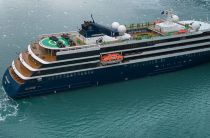
AOV-Atlas Ocean Voyages unveils 2026-2027 Antarctic cruises with 6 itineraries
Atlas Ocean Voyages has announced the opening of bookings for its "Polar Expeditions by Atlas" to Antarctica, scheduled from November 2026 through...
March 25, 2025 - Cruise Industry
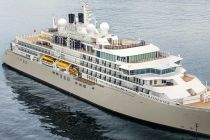
Silversea announces 230 new cruises for 2026-2027 across all 7 continents
Silversea Cruises has unveiled 230 voyages for the 2026-2027 season, expanding its offerings to 400+ destinations in 85+ countries. This collection...
December 15, 2024 - Cruise Industry
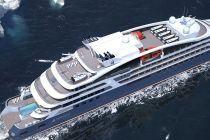
PONANT announces Antarctic Expeditions for 2025-2026 season
The French ultra-luxury cruise travel company PONANT presents an opportunity to voyage to the Antarctic from October 2025 to March 2026, as Ponant's...
March 12, 2024 - Cruise Industry
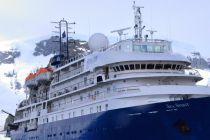
Poseidon Expeditions opens bookings for Sea Spirit ship's Arctic and Antarctic cruises
Poseidon Expeditions, renowned for its polar small-ship cruises, has commenced bookings for Arctic and Antarctic expeditions aboard the MV Sea Spirit...
March 8, 2024 - Accidents
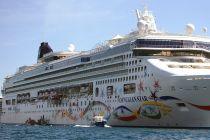
IAATO regulations prompt NCL's ship Norwegian Star to change itinerary, skips Antarctica
NCL-Norwegian Cruise Line has made a last-minute adjustment to the itineraries of its ship, Norwegian Star, removing Antarctica from the upcoming...
February 13, 2024 - Cruise Industry

Hurtigruten's ship MS Maud resumes cruises following drydock repairs
After undergoing necessary drydock repairs following weather damage in December 2023, HX-Hurtigruten's expedition ship MS Maud is now scheduled to...
January 21, 2024 - Cruise Industry
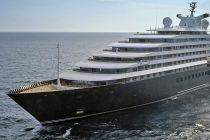
Scenic Cruises unveils 2025-2026 Antarctica program with varied itinerary options
Scenic Cruises has released its Antarctica program for 2025-2026, offering travelers a customizable experience with diverse expedition levels. The...
December 23, 2023 - Cruise Industry
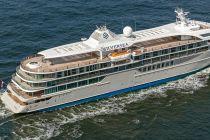
Silversea initiates exclusive pre-sale for winter 2025-2026 cruises
The ultra-premium travel brand Silversea has initiated an exclusive pre-sale for its winter 2025-2026 voyages, encompassing 150+ itineraries to 200...
November 2, 2023 - Cruise Industry
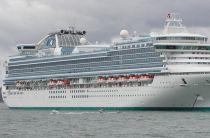
Princess Cruises opens bookings for South America & Antarctica 2024-2025 season
The luxury travel brand Princess Cruises opened for booking an array of captivating voyages scheduled for South America and Antarctica season 2024...
August 8, 2023 - Cruise Industry

AOV-Atlas Ocean Voyages adding 26 expeditions for newest yacht, World Voyager
AOV-Atlas Ocean Voyages, the leading company in yacht expedition cruising, has announced the inclusion of 26 new expeditions for its latest yacht...
July 24, 2023 - show more news
